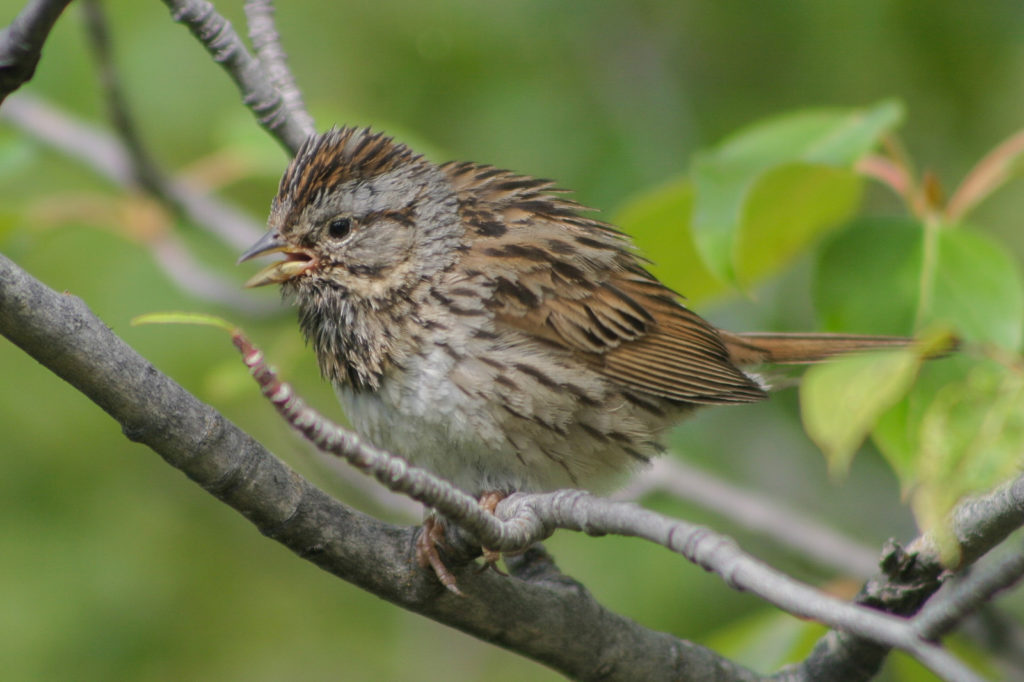Lincoln’s and Song Sparrows are both common birds in Southern Alberta, and indeed in many places across Canada, but to many people, the two can be tough to differentiate without hearing them singing. They are both generally small, brown birds with a streaked breast. They both have grey and brown striped heads with a white throat and pink legs.

So how do you tell them apart? Well, some people would call attention to the Lincoln’s slight crest and (sometimes hidden) white eye-ring. Others might mention the Song Sparrow’s dark breast spot and long, rounded tail. These are all good factors to consider when attempting to identify one, but not, to my eye, the most useful, or even the most obvious.
In my opinion, the best thing there is to tell a Lincoln’s from a Song is the overall color scheme. Song Sparrows are dark brown, and heavy streaking and the dark malar stripe both add to the feeling of a dark bird, as the streaking blocks the pale breast, and the malar stripe subdues the white of the throat. Lincoln’s don’t have a malar stripe, and their streaking is lighter and much finer. Their backs are pale brown, and there is a heavy buff wash across their breast.

The two differ in habitat as well, though there is much overlap. Where the Lincoln’s prefers marshes and riparian thickets (often in mountainous regions), the Song Sparrow turns up in denser vegetation along watercourses, marshes and wet fields. In both cases, the males sing from prominent perches while the females remain highly secretive, and the Lincoln’s females even leave the nest by ‘mouse-running’ along the ground.


A final clue can be found at the nest site – Song Sparrows jointly hold the dubious honor of the most common Cowbird host with Yellow Warbler, whereas Lincoln’s are almost never prey to such parasitism.
| To sum it up: | SONG SPARROW (Melospiza melodia) | LINCOLN'S SPARROW (Melospiza lincolnii) |
|---|---|---|
| Key differences on the head: | Dark malar stripe, notably round head shape. | White eye-ring and crested head. |
| Key differences on the body: | Darker overall, note dark breast spot, highly variable but always present heavy streaking. | Lighter overall, with light, fine streaks, heavy buff wash (may extend to back) |
| Other notable differences in plumage and structure: | Longer, rounded tail, occasionally bigger than Lincoln's. | Short, square tail. less bulky than Song, even when equal sizes. |
| Habitat & Habits: | Wet meadows, marshes, watercourse edges. Will come to feeders in winter. | Bogs, marshes, riparian thickets usually in mountainous areas. Shyer than Song. |
| Range: | Common across lower 48 states and all Canadian provinces. Regular on South-western coast of Alaska. | Common across Canada and mid-western States as well as all southern states and Alaska. |
| Notes: | Very common Cowbird host. Monogamous except when females outnumber males. Most varied bird in North America with 31 subspecies. | Rarely parasitized. Assumed monogamous, but not confirmed. |
what is the size of the bird?